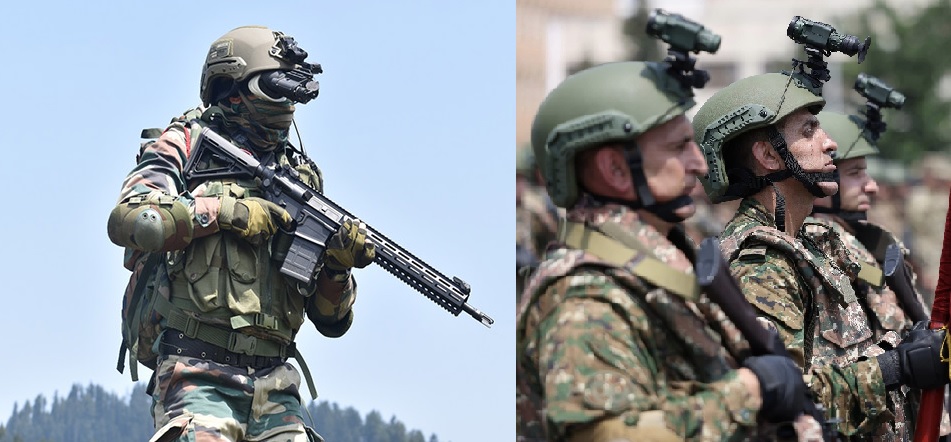India
India recently marked a significant achievement by successfully concluding its fourth periodic review under the United Nations' International Covenant on Civil and Political Rights (ICCPR). This review, conducted by the Human Rights Committee in Geneva, was a testament to India's ongoing commitment to upholding and promoting civil and political rights within the international human rights framework.The ICCPR, a pivotal multilateral treaty adopted by the UN General Assembly in 1966 and effective since 1976, requires nations to respect and ensure various civil and political rights. India, having become a party to this covenant in 1979, has undergone previous reviews, with the most recent before this being in 1997. The fourth review, held from July 15 to 16, 2024, saw India's delegation engaging in detailed and constructive dialogues with the committee members.The Indian delegation, co-led by Attorney General R. Venkataramani and Solicitor General Tushar Mehta, also included Pavan Kapoor, Secretary (West) in the Ministry of External Affairs (MEA). They addressed numerous queries from the committee covering a broad spectrum of issues such as anti-corruption measures, non-discrimination policies, the status of women and minorities, counter-terrorism strategies, national security, the judicial framework, privacy and data protection laws, and the introduction of new criminal laws.Throughout the discussions, India emphasized its progress in protecting the rights of vulnerable groups, highlighting efforts and achievements in areas like women’s rights, minority protections, and combating discrimination. The committee members acknowledged India's traditions and ethos, particularly its principles of pluralism, non-violence, and diversity, which align closely with the essence of human rights.The review process not only demonstrated India's willingness to address international concerns but also showcased its proactive stance in engaging with the global human rights framework. The MEA underscored that the rights and freedoms enshrined in the ICCPR are guaranteed under India's Constitution and supported by its legislative and judicial systems.Moreover, the MEA highlighted India's vibrant democracy, pointing out that the country had recently concluded the world's largest democratic exercise. The review also served as an opportunity to reflect on India's contributions to the evolution of the global human rights framework, reaffirming its commitment to these fundamental principles.The Human Rights Committee, consisting of 18 independent experts, plays a crucial role in monitoring the implementation of the ICCPR across its state parties. These experts conduct periodic reviews and provide observations and recommendations to ensure continuous improvement in human rights practices worldwide.India's successful completion of this periodic review is a positive reflection of its dedication to human rights. It underscores the nation's efforts to maintain a transparent, accountable, and inclusive approach to governance, ensuring the protection and promotion of civil and political rights for all its citizens.This achievement not only reinforces India's position on the global stage as a committed advocate of human rights but also sets a precedent for continued dialogue and cooperation within the international community.
Read More → Posted on 2024-07-17 13:49:29World
In a chilling escalation of border defenses, North Korea has recently laid tens of thousands of new landmines along its border, subjecting its soldiers to harsh conditions and significant risk, according to South Korean authorities. This aggressive move by Pyongyang has intensified concerns and highlighted the perilous state of affairs on the Korean Peninsula.The South Korean defense ministry reported on Wednesday that despite the extreme heat and monsoon season, the North Korean military has been actively placing mines and erecting fences along the front-line areas. The newly planted mines are estimated to be in the tens of thousands, further fortifying the already heavily mined demilitarized zone (DMZ).The process has been far from smooth, with at least ten incidents of mine explosions resulting in multiple casualties among the soldiers tasked with this hazardous job. These soldiers have been forced to work under grueling conditions, living in inadequate barracks, and enduring long hours without weekends or changes in duty. They typically work 12 to 13 hours a day, a testament to the severe demands placed upon them.Photographic evidence released by the South Korean defense ministry paints a grim picture of the situation. One photo shows three soldiers carrying wooden boxes identified as landmines, while another depicts a group of soldiers transporting an injured comrade on a stretcher, likely a casualty of one of the mine explosions.The South Korean military is now on high alert, bracing for potential defections by North Korean soldiers who might be driven to flee due to the deplorable working conditions. There is also the looming threat of further breaches into South Korean territory as tensions continue to mount.Relations between the two Koreas have deteriorated significantly, reaching one of their lowest points in years. Earlier this year, North Korean leader Kim Jong Un declared South Korea as his "principal enemy" and dismantled agencies dedicated to reunification, further escalating security measures along the border.In recent months, North Korean troops have inadvertently crossed the border multiple times, incidents that Seoul attributes to the intensified efforts to bolster defenses. Additionally, North Korea has ramped up its weapons testing and grown closer to Russia, raising further alarm. Seoul has accused Pyongyang of supplying arms to Moscow for use in the Ukraine war, adding another layer of complexity to the already volatile situation.The recent developments underscore the precarious nature of the Korean Peninsula's security environment. As North Korea continues to fortify its border with extensive landmine deployments, the international community watches with concern, aware that any miscalculation could have severe consequences.
Read More → Posted on 2024-07-17 13:46:14World
In a dramatic revelation, national security officials disclosed that the United States had received intelligence about an Iranian plot to assassinate former President Donald Trump weeks before an actual attempt on his life occurred on Saturday. This alarming intelligence prompted heightened security measures for Trump, illustrating the ongoing threats he faces even after his presidency.The plot, sourced from a human intelligence asset, led to an immediate response from the US Secret Service and Trump's campaign team, who were both notified of the potential danger. Consequently, Trump's security detail was significantly reinforced. However, officials clarified that there is no known link between this specific Iranian plot and the recent assassination attempt carried out by a 20-year-old individual.The threats against Trump and his former Secretary of State, Mike Pompeo, trace back to the 2020 drone strike that killed Qassim Soleimani, the leader of Iran's Quds force, in Iraq. This event has fueled ongoing animosity from Tehran, manifesting in various forms of retaliation threats. Anthony Guglielmi, a spokesman for the US Secret Service, emphasized the continuous nature of threat assessments and adjustments, stating, "We cannot comment on any specific threat stream, other than to say that the Secret Service takes threats seriously and responds accordingly."Adrienne Watson, a spokeswoman for the White House National Security Council, reiterated that US security officials have been tracking Iranian threats against former Trump administration officials for years. This vigilance underscores the persistent risk posed by hostile foreign actors.The Iranian mission at the United Nations dismissed the intelligence report as "unsubstantiated and malicious," labeling Trump a "criminal who must be prosecuted and punished in a court of law."In the wake of the assassination attempt, Trump made his first public appearance at the Republican National Convention on Monday. With a white bandage on his right ear, he waved to supporters and received a standing ovation, but refrained from making any remarks. He stood alongside his newly announced running mate, Senator JD Vance, in a show of resilience and defiance.The assassination attempt occurred during a campaign rally on Saturday, where gunshots suddenly erupted, prompting Secret Service agents to storm the stage. The incident resulted in the tragic death of one rally attendee, while two others were critically injured. Trump later revealed that the bullet had grazed the upper part of his right ear.The FBI has identified the shooter as Thomas Matthew Crooks, a 20-year-old from Bethel Park, Pennsylvania. The investigation into Crooks' motives and connections is ongoing, with authorities seeking to determine whether he had any ties to the Iranian plot or acted independently.This incident highlights the ongoing threats faced by former President Trump and underscores the complex security challenges that accompany his high-profile status. As investigations continue, the interplay between foreign plots and domestic actions remains a critical area of focus for national security agencies.
Read More → Posted on 2024-07-17 13:42:39India
In a significant crackdown on illegal drug cultivation, the Border Security Force (BSF) recently carried out a joint operation with the Forest Department and the Jatrapur Police Station in Tripura. This collaborative effort led to the uprooting of 15,000 ganja saplings in the village of Nirbhoypur. The estimated value of these saplings is around ₹7.5 lakh, marking a substantial blow to local illicit drug activities.The operation was triggered by specific intelligence that pointed to the involvement of a local resident, Babul Mazumdar. According to a press release from the BSF's Frontier Headquarters in Tripura, Mazumdar had set up a ganja plant nursery behind his house in Nirbhoypur. Acting swiftly on this information, the BSF, alongside the Forest Department and local police, conducted a raid that resulted in the destruction of the illegal plantation.Legal proceedings are now underway against the landowners implicated in this illegal activity. The Forest Department and the Jatrapur Police Station are taking necessary actions to ensure that those responsible are held accountable. This operation underscores the BSF's commitment to curbing the cultivation of ganja in the border regions of Tripura, an area that has seen repeated efforts by various agencies to control the spread of illicit drug farming.The operation is a part of the BSF's broader strategy to eliminate the cultivation and distribution of illegal drugs in the region. The BSF's consistent efforts, in collaboration with local authorities, aim to dismantle the networks that facilitate the cultivation and distribution of such substances. The recent success in Nirbhoypur highlights the effectiveness of coordinated operations in addressing this issue.In recent years, Tripura has witnessed several such operations where the BSF, along with state agencies, has destroyed large quantities of illegal drug plants. These operations are not only vital for maintaining law and order but also for protecting the local communities from the adverse effects of drug proliferation. The involvement of local residents in these illegal activities poses a significant challenge, necessitating continuous vigilance and action from law enforcement agencies.The destruction of the ganja saplings in Nirbhoypur serves as a stark warning to those involved in the illegal drug trade. It reinforces the message that the authorities are vigilant and ready to take decisive action against such activities. The BSF's proactive approach, combined with local support, is crucial in maintaining the security and integrity of the region.As the BSF and local authorities continue their efforts, the community's role in providing information and support becomes increasingly important. This collaboration between law enforcement and residents can significantly enhance the effectiveness of operations aimed at eradicating illegal drug cultivation and ensuring a safer environment for all.In conclusion, the recent operation in Nirbhoypur is a testament to the BSF's dedication to eliminating illegal drug cultivation in Tripura. The successful uprooting of 15,000 ganja saplings worth ₹7.5 lakh not only disrupts the local drug trade but also sends a clear message of zero tolerance towards such activities. The ongoing legal actions and the BSF's continued vigilance will be key in sustaining these efforts and achieving long-term success in the fight against illegal drugs in the region.
Read More → Posted on 2024-07-17 13:39:52World
In a recent interview with Bloomberg Businessweek, former US President and current presidential candidate Donald Trump suggested that Taiwan should financially compensate the United States for its defense efforts against China. This statement has raised questions about the future of the strategic relationship between Washington and Taipei if Trump is re-elected.Trump's remarks were part of a wide-ranging discussion that touched on various aspects of US foreign policy. When asked if he would commit to defending Taiwan, which China claims as its territory, Trump replied, "I know the people very well, respect them greatly. They did take about 100 percent of our chip business. I think Taiwan should pay us for defense." He likened the US to an insurance company, implying that Taiwan should contribute financially for the protection it receives from the US.The United States, while not officially recognizing Taiwan as a sovereign state, maintains a strong partnership with the island nation, particularly in terms of military support. Recently, Washington approved a multi-billion-dollar military aid package to bolster Taiwan's defenses amid increasing pressure from Beijing. This aid is crucial as Taiwan is a pivotal player in the semiconductor industry, producing the advanced microchips essential for global technological infrastructure.One of Taiwan's leading companies, Taiwan Semiconductor Manufacturing Company (TSMC), has significantly benefited from the US's Chips and Science Act, enacted in 2022. This legislation was designed to incentivize companies to build semiconductor factories in the US. As a result, TSMC is currently constructing two plants in the US and has plans for a third, with a total investment of $65 billion.Despite this, Trump criticized the arrangement, expressing frustration that the US is investing billions to support Taiwan's chip manufacturing capabilities on American soil, only for Taiwan to dominate the industry. "We're giving them billions of dollars to build new chips in our country, and then they’re going to take that too," he lamented. Trump's analogy of the US acting as an "insurance policy" highlights his view that Taiwan should provide compensation for the defense and support it receives.Trump's comments come at a time when the geopolitical landscape in the Asia-Pacific region is increasingly tense. China's assertive stance towards Taiwan and its broader regional ambitions have led to a strategic pivot by the US towards reinforcing its alliances and defense commitments in the area.If Trump were to return to the White House, his stance on Taiwan could lead to a reevaluation of the current US policy, potentially demanding greater financial contributions from Taiwan for its defense. This shift could impact the dynamics of US-Taiwan relations and the broader international response to China's actions in the region.In summary, Trump's suggestion that Taiwan should "pay" for US defense efforts adds a new dimension to the ongoing dialogue about the strategic partnership between the two nations. As Taiwan continues to play a critical role in the global semiconductor industry and faces mounting pressure from China, the future of US-Taiwan relations remains a crucial topic in international politics.
Read More → Posted on 2024-07-17 13:35:43India
In a significant development in Chhattisgarh's ongoing battle against Maoist insurgency, four Maoists, collectively carrying a reward of ₹20 lakh on their heads, surrendered in the Sukma district. Among the surrendered rebels, two are women, and their decision to lay down arms marks a critical moment in the state's efforts to curb Maoist violence and promote peace.The group surrendered before senior police and Central Reserve Police Force (CRPF) officials, including the district superintendent of police, Kiran Chavan. The Maoists cited deep disillusionment with the Maoist ideology and the atrocities committed by their comrades on the tribal communities as their primary reasons for surrendering. They labeled the Maoist ideology as "inhuman" and "hollow," rejecting its principles and methods.One of the key figures in this surrender was Kailash alias Kavasi Deva, a 35-year-old deputy commander of the Maoists' company number 10, who carried a reward of ₹8 lakh on his head. Alongside him was Vanjam Hadma, a 24-year-old senior cadre of platoon number 30, and Sukki Madkam, a 31-year-old area committee member under the south Bastar division of the Maoists. Both carried a reward of ₹5 lakh each. The fourth member, Ravva Deve, a 25-year-old woman cadre from the Maharashtra-Gadchiroli-Bhamragarh area committee, had a reward of ₹2 lakh on her head.These four individuals, all residents of Sukma district, were allegedly involved in numerous violent incidents, including attacks on police teams. Their surrender is seen as a direct result of the state government's effective Naxalite elimination policy and various welfare schemes aimed at promoting peace and development in the region. The government’s approach has not only focused on military action but also on winning the hearts and minds of the local population through development initiatives and rehabilitation programs. This strategy appears to be yielding results, as evidenced by the recent surrenders.Each of the surrendered Maoists has been provided with an initial assistance of ₹25,000 and will be rehabilitated according to the government’s policy. This includes access to various schemes aimed at integrating them back into society and ensuring they have opportunities for a better future away from violence and extremism.This surrender is a significant victory for the Chhattisgarh police and the CRPF, who have been tirelessly working to combat the Maoist threat in the region. It also serves as a testament to the potential success of comprehensive counter-insurgency strategies that combine force with socio-economic development.The surrender of these Maoists is a hopeful sign that more rebels might choose to abandon their arms and embrace the path of peace, driven by a growing realization of the futility of their violent struggle and the positive impact of government policies aimed at their welfare.
Read More → Posted on 2024-07-17 13:31:41India
In a significant development, the Supreme Court has intervened in a plea filed by the Nagaland government challenging the Centre's refusal to sanction the prosecution of 30 Army personnel. These personnel stand accused of involvement in a tragic incident in 2021, where 13 civilians lost their lives during an operation aimed at ambushing militants in the Mon district.The Nagaland government, dissatisfied with the Central government's decision to deny prosecution sanction, has petitioned the Supreme Court under Article 32 of the Constitution. This article allows for petitions alleging violations of fundamental rights, asserting that the state has compelling evidence, including from a special investigation team, implicating the Army personnel.A bench led by Chief Justice D Y Chandrachud has taken cognizance of the state's grievances and issued notices to the Centre and the Ministry of Defence. The court has scheduled a hearing on September 3 to delve into the matter further.Previously, the Central government had halted the prosecution citing lack of sanction, a move contested by the state as arbitrary and not based on a thorough examination of the evidence. This legal standoff saw a temporary halt in proceedings last year when the Supreme Court stayed the prosecution following pleas from the accused personnel's families.The case highlights tensions between military operations and civilian rights, emphasizing the role of legal processes in ensuring accountability and justice. The upcoming Supreme Court hearing promises to be a critical juncture in determining the next steps in this contentious legal battle.This development underscores ongoing debates surrounding military conduct in conflict zones and the legal frameworks governing such incidents.
Read More → Posted on 2024-07-16 16:04:31India
In a landmark achievement for aviation safety, the Gas Turbine Research Establishment (GTRE) has successfully developed India's first indigenous anti-icing technology for aero engines. This development marks a significant step forward in addressing a critical safety issue that has long plagued aviation worldwide: the formation of ice on aircraft and engine surfaces.When aircraft fly through clouds containing supercooled water droplets, these droplets can freeze upon contact with the aircraft's surfaces. This accumulation of ice disrupts airflow, compromises aerodynamic performance, and can severely impact flight stability and engine functionality. Historically, icing has been a contributing factor in numerous fatal aviation accidents.To mitigate these risks, aircraft and engines are equipped with ice protection systems. Anti-icing systems, in particular, work by heating surfaces to prevent ice from forming. These systems typically use electricity or hot air from the engine compressor to maintain the necessary temperatures. Until now, India lacked the capability to develop such advanced technology domestically.GTRE's project focused on creating a hot air anti-icing system specifically designed for modern gas turbine engines, suitable for both manned and unmanned aircraft. The primary targets for this system are critical components such as the engine inlet casing's struts and bullet noses, which are particularly vulnerable to ice buildup.The development process was notably swift, thanks to a blend of conventional and additive manufacturing techniques. GTRE produced two test pieces of the engine inlet casing within a remarkably short timeframe. These pieces featured four different anti-icing designs, facilitating an efficient validation process through icing wind tunnel tests.Validation of the design methodology was a rigorous process. GTRE conducted extensive testing at the CIRA facility in Italy, where the test hardware demonstrated its anti-icing capabilities under simulated icing conditions. The results were conclusive, meeting all necessary certification requirements.This technological breakthrough equips GTRE with the expertise to design anti-icing systems for any advanced gas turbine aero engine. Their capabilities now include conducting numerical studies to calculate crucial icing characteristics, such as water catch efficiency, which are vital for the development of aero-engine and aircraft programs.The implications of this indigenous technology are profound. It promises to significantly enhance the safety and operational capabilities of both military and civil aviation in India. Moreover, this achievement underscores India's growing self-reliance in critical aerospace technologies, paving the way for future advancements in the field. GTRE's success in developing this anti-icing technology is a testament to India's commitment to advancing its aerospace capabilities and ensuring the safety of its aviation operations.
Read More → Posted on 2024-07-16 16:02:42World
Pakistan's economy has long been a topic of concern, with its reliance on foreign aid becoming a significant part of the country's political discourse. Prime Minister Shehbaz Sharif acknowledged the issue two years ago, stating, "Today, when we go to any friendly country or make a phone call, they think that we have come to beg for money." This reliance on external financial assistance has led to a poignant irony within the country: while the government seeks aid internationally, begging has become an organized and lucrative industry domestically.In Pakistan, begging is not just a matter of individual destitution but a highly organized and competitive business. Reports estimate that around 38 million beggars operate within the country, generating an astonishing $42 billion annually. This figure represents more than 12% of Pakistan's GDP, highlighting the scale and economic impact of the begging industry.The operations are meticulously organized, with beggars often working under the control of local gangs. These gangs allocate territories and enforce strict rules, leading to frequent turf wars. Karachi, Pakistan's largest city, sees the highest daily collections, with beggars making up to Rs 2,000 a day. The competition for lucrative spots can sometimes turn violent, underscoring the desperation and stakes involved.The situation extends beyond Pakistan's borders. A parliamentary probe revealed that many beggars arrested in foreign countries were of Pakistani origin. These individuals often exploit pilgrim visas to travel to holy sites in countries like Saudi Arabia, Iran, and Iraq, where they then engage in begging. In response, the Pakistani government has taken measures to curb this practice. Recently, authorities decided to block the passports of more than 2,000 beggars for seven years and restrict the activities of agents facilitating this overseas begging business.Efforts to tackle the issue domestically have met with significant challenges. The government has struggled to eradicate beggary, with police actions often facing strong resistance. In 2011, a notable incident in Faisalabad saw hundreds of beggars clashing with police, throwing stones and bricks at the police station. One beggar poignantly remarked, "Since when has begging become a crime in Pakistan? We will stop begging the moment our government stops begging from the IMF and other foreign countries."This statement reflects a broader sentiment of frustration and irony among the Pakistani populace. The country's dependence on foreign aid and the organized nature of domestic begging highlight a deep-seated issue that intertwines economic hardship with societal behaviors.The Pakistani government's recent measures, including the offloading of 44,000 individuals over the past two and a half years and calls for increased screening before issuing passports, indicate a proactive approach. However, the deeply entrenched nature of the begging industry suggests that comprehensive solutions will require sustained effort and significant socio-economic reforms.In conclusion, Pakistan's begging industry, generating $42 billion annually, is a stark reflection of the country's economic challenges and the complex interplay of poverty, organized crime, and governmental dependency on foreign aid. Addressing this issue will necessitate not only cracking down on organized begging but also fostering economic stability and reducing the country's reliance on external financial support.
Read More → Posted on 2024-07-16 15:59:33World
Exail, a leader in robotics and high-tech industries, has been selected to participate in the European Extended Mine Counter Measures (E=MCM) project. This consortium effort, spearheaded by Naval Group Belgium, aims to bolster Europe’s capabilities in mine warfare, addressing an array of threats posed by modern maritime mines. The project is part of a broader initiative backed by the European Defense Fund to enhance the Mine Counter Measures (MCM) capabilities of European navies.Exail’s inclusion in the E=MCM project marks a significant milestone for the company. Alain Fidani, Director of Partnership and Innovation Funding at Exail, expressed the company’s enthusiasm about contributing to the project. He highlighted Exail's technological expertise and its crucial role in developing advanced solutions to counter current and emerging mine threats. By collaborating with Naval Group and other consortium partners, Exail aims to deliver innovative technologies that will strengthen Europe’s defense.A central objective of the E=MCM project is the development of Toolbox 2.0, an advanced set of tools designed to address various mine threats, including drifting, tethered, and buried mines. This next-generation toolbox will build upon the current MCM capabilities that Exail is already providing for the Belgian and Dutch navies. The enhancements will incorporate scalable unmanned autonomous systems and intelligent platforms, significantly improving operational efficiency and optimizing mine countermeasure operations.Exail, formed through the merger of ECA Group and iXblue in 2022, specializes in a range of high-tech sectors, including robotics, maritime, navigation, aerospace, and photonics. The company’s robust entrepreneurial culture drives its commitment to delivering exceptional performance, reliability, and safety to both civil and defense clients. With a workforce of 1,500 employees and operations in over 80 countries, Exail leverages its global footprint to meet the needs of clients operating in some of the most challenging environments on Earth and beyond.The E=MCM project’s advancements promise to significantly enhance the effectiveness of mine countermeasures across Europe, ensuring that navies are well-equipped to tackle the sophisticated threats posed by modern mines. Exail’s role in this project underscores its position at the forefront of technological innovation in the defense sector, and its contributions are set to make a lasting impact on Europe’s maritime security.By integrating cutting-edge technologies and fostering strong partnerships, Exail and the E=MCM consortium are poised to deliver state-of-the-art solutions that will safeguard European waters and strengthen the continent’s defensive capabilities.
Read More → Posted on 2024-07-16 15:54:43World
In a landmark event on July 12, the Oregon Air National Guard’s 142nd Wing showcased the future of American air superiority with the formal unveiling of the first two operational U.S. Air Force F-15EX Eagle II fighter jets. This ceremony at the Portland Air National Guard Base marked a historic moment, as it was the first time a new weapons system was introduced to the Air National Guard before being implemented by the active duty Air Force.The atmosphere was electric as dignitaries, elected officials, military members, and aviation enthusiasts gathered to witness the cutting-edge fighter jet that will soon replace the aging F-15C Eagle models. Among those present were Col. Michael Kosderka, the 142nd Wing commander, and Brig. Gen. Alan Gronewold, the adjutant general for the Oregon National Guard, both of whom spoke passionately about the significance of this upgrade.Col. Kosderka expressed his immense pride and excitement for the 142nd Wing, emphasizing the unit's readiness and capability to integrate this advanced aircraft. Brig. Gen. Gronewold highlighted the F-15EX’s role in modernizing the wing, enhancing operational readiness, and improving the training opportunities for airmen, ensuring seamless interoperability with active duty units.Governor Tina Kotek underscored the importance of the F-15EX in strengthening homeland defense, particularly for the Pacific Northwest. She lauded the exceptional contributions of the Oregon National Guard service members, recognizing their critical role in defending the skies from Canada to the California border.Senator Ron Wyden, a staunch advocate for the Oregon National Guard, also addressed the attendees, reminiscing about the community's efforts to prevent the closure of the 142nd Fighter Wing two decades ago. He celebrated the collective determination that secured the unit’s future and now sees it equipped with one of the most advanced fighter jets in the U.S. arsenal.The introduction of the F-15EX Eagle II is a significant milestone for the 142nd Wing, which has a storied history with the F-15 Eagle. The base began operating the F-15 in 1989, replacing the F-4 Phantom II. Over the years, the unit transitioned to the upgraded F-15C and D models, and now, the F-15EX promises to bring unparalleled advancements in radar, sensors, and software.Manufactured by Boeing, the F-15EX is an all-weather multirole strike fighter designed to work alongside the U.S. Air Force's F-22 Raptor and F-35 Lightning II. Its next-generation capabilities ensure it remains a formidable asset against evolving threats. Maj. Gen. Duke Pirak, the acting director of the Air National Guard and former 142nd Wing commander, emphasized the F-15EX’s role as the cornerstone of the nation’s air power, predicting it will maintain American air supremacy for generations.The 142nd Wing is set to receive 18 of these advanced aircraft, part of nearly 100 new operational F-15EX Eagle IIs being added to the Air Force inventory. This modernization effort not only enhances the wing's capabilities but also symbolizes a commitment to maintaining robust defense mechanisms to protect U.S. skies.The unveiling of the F-15EX Eagle II at the Portland Air National Guard Base marks a new era for the 142nd Wing and the broader mission of the Air National Guard. As the unit prepares to operate these state-of-the-art jets, it stands as a testament to the resilience and forward-thinking strategy of the Oregon Air National Guard, ready to defend and secure the nation with unmatched aerial superiority.
Read More → Posted on 2024-07-16 15:50:44India
In a notable development during the Eagle Partner Military Drill 2024, Armenian forces have been seen using advanced thermal imaging technology from India. This year's drill, aimed at bolstering regional cooperation and military preparedness, has Armenian soldiers equipped with the Spartan-S, a next-generation Clip-On Thermal Weapon Sight (CLIPON) from Tonbo Imaging, a prominent Indian defense contractor.The Spartan-S stands out as a cutting-edge tool in modern warfare. Weighing less than 300 grams, it is a compact yet powerful device that offers a range of capabilities. Designed for ease of use, this all-in-one handheld unit can be attached to small and medium caliber weapons as a true Clip-On sight. Its versatility extends further, allowing it to function as a standalone sight, handheld viewer, or even as a helmet-mounted system, making it suitable for various tactical scenarios.One of the Spartan-S's most significant features is its ability to deliver some of the sharpest thermal images available on the market. This high-quality imaging is achieved through a 12um TUVE thermal imaging core, complemented by advanced video processing algorithms developed by Tonbo Imaging. The result is a clear and precise thermal picture that can be crucial in low-visibility conditions, enhancing the effectiveness of soldiers in the field.The Spartan-S is designed with mission readiness in mind. Its Clip-On mode means there is no need for re-zeroing when switching from day optics to the thermal sight, allowing for rapid deployment in dynamic situations. Additionally, the sight includes a flip-to-side quick detach mount, which facilitates smooth transitions while maintaining zero settings, crucial for maintaining accuracy and readiness during operations.Ergonomics and intuitive operation are key aspects of the Spartan-S. The device features an advanced ergonomic design with tactile buttons that provide clear feedback, making it easy to operate even while wearing gloves. This design ensures silent and efficient operation, which is essential in maintaining stealth and effectiveness in the field.The adoption of the Spartan-S by Armenian forces during the Eagle Partner Military Drill 2024 highlights the growing importance of advanced thermal imaging technology in modern military operations. This collaboration between Armenia and Tonbo Imaging not only enhances the capabilities of Armenian soldiers but also underscores the role of international partnerships in advancing military technology and preparedness.As the geopolitical landscape continues to evolve, the integration of such advanced technologies will likely play a crucial role in the effectiveness of military operations. The Spartan-S, with its state-of-the-art features and user-friendly design, represents a significant step forward in this domain, providing soldiers with the tools they need to operate effectively in diverse and challenging environments.
Read More → Posted on 2024-07-16 15:47:50India
The Indian Navy is eagerly awaiting the arrival of its first advanced stealth frigate from Russia in September 2024. This marks a significant milestone in India's defense capabilities, especially after facing numerous delays and setbacks. The COVID-19 pandemic, the ongoing conflict in Ukraine, and the resulting Western sanctions on Russia have all played a part in hindering the timely delivery of these crucial naval assets.Named "Tushil," the first frigate is now ready for handover. The commissioning crew, having arrived in Russia earlier this month, is preparing for the ship's imminent transfer to India. The second frigate, "Tamal," is scheduled for delivery by February 2025. These ships are part of a larger Inter-Governmental Agreement (IGA) signed between India and Russia in October 2016, aimed at enhancing the Indian Navy's fleet with advanced stealth technology.The agreement includes a total of four stealth frigates, with two being directly imported from Russia and the other two to be constructed domestically by Goa Shipyard Limited (GSL). The deal for the imported frigates was valued at $1 billion, while the contract for the locally constructed ships stood at $500 million. The frigates from GSL are expected to be delivered by 2026, with the first one set to launch in the next few months.The journey of these frigates has been anything but smooth. Initially, they were basic structures at the Yantar shipyard in Russia. India secured these structures and has overseen their completion, despite the myriad challenges posed by global events. The Indian Navy already operates six similar frigates, each weighing around 4,000 tonnes, and the addition of these new vessels will significantly bolster its maritime capabilities.The delays were primarily caused by the COVID-19 pandemic, which disrupted global supply chains and workforce availability. The situation was further complicated by the war in Ukraine. The conflict led to a slew of sanctions against Russia, affecting its defense exports and creating additional hurdles in the construction and delivery processes.However, the imminent delivery of "Tushil" and "Tamal" is a testament to the resilience and determination of both nations to continue their defense cooperation amidst such complexities. This development not only highlights the strategic partnership between India and Russia but also underscores the importance of maintaining and enhancing naval power in the current geopolitical climate.For the Indian Navy, these frigates represent a leap forward in stealth technology and naval warfare capabilities. As modern naval threats evolve, the integration of advanced stealth frigates will provide India with a significant tactical advantage in protecting its maritime interests.The commissioning of these vessels comes at a time when India's defense strategy is increasingly focusing on self-reliance and modernization. The successful acquisition and integration of these frigates will serve as a critical component of this strategy, ensuring that the Indian Navy remains a formidable force in the region.As the delivery dates approach, the anticipation and excitement within the Indian defense community are palpable. The arrival of "Tushil" in September and "Tamal" in February will be celebrated milestones, marking the culmination of years of planning, negotiation, and overcoming obstacles.In conclusion, despite the delays and challenges, the Indian Navy is on the brink of a significant upgrade with the addition of these Russian stealth frigates. This development not only strengthens India's naval capabilities but also reaffirms the enduring defense ties between India and Russia. As these advanced frigates set sail, they symbolize a new era of cooperation and technological advancement for the Indian Navy.
Read More → Posted on 2024-07-16 15:43:19World
Taiwan is set to receive the long-awaited F-16V fighter jets from the United States by 2026, a crucial addition to its defense arsenal amidst rising tensions with China. This development comes after the Taiwanese defense ministry announced that all production and delivery issues for the aircraft had been resolved, bringing a sigh of relief to many.The journey to this point has been far from smooth. Back in 2019, the US State Department approved an $8 billion deal to sell 66 F-16Vs to Taiwan. These aircraft, known for their advanced capabilities, were initially expected to be delivered in 2023. However, several setbacks, including software integration issues with equipment specified by Taiwan, delayed the process. Adding to the delays were the technical and supply chain challenges exacerbated by the US prioritizing arms supplies to Ukraine amidst its ongoing conflict.Taiwan's need for these modern aircraft is pressing. With China viewing Taiwan as a breakaway province that must eventually be reunified with the mainland, Taipei has felt the increasing pressure. Modern fighter jets like the F-16V are vital for Taiwan to bolster its military capabilities and ensure a robust defense strategy against any potential aggression from Beijing.Although Taiwan is expected to receive two F-16V prototypes later this year for flight testing, there are still concerns. Reports indicate that Lockheed Martin, the manufacturer, may face difficulties in delivering all 66 jets by the 2026 deadline. This challenge is compounded by the numerous orders from European countries, particularly as NATO rushes to supply F-16s to Ukraine. Furthermore, Taiwan's arms backlog continues to grow, with other critical defense systems like Harpoon missiles, High Mobility Artillery Rocket Systems (HIMARS), and Patriot air defense missiles still pending delivery.Amidst these challenges, Taiwan retains some leverage. According to Focus Taiwan, the Ministry of National Defense has stated that the island nation could seek compensation from Lockheed Martin for the delayed deliveries. The contract includes provisions for penalties if the contractor fails to meet delivery deadlines without valid force majeure reasons. For Taiwan to claim this compensation, it must first document the damages incurred due to the delays and then formally request redress through bilateral security channels with the US government.As Taiwan navigates these complex defense procurement issues, the focus remains on ensuring that its military is well-equipped to face any threats. The anticipated delivery of the F-16Vs by 2026 is a significant milestone in this effort, promising to enhance Taiwan's defense capabilities significantly. The resolution of the production issues is a crucial step forward, but the road ahead will require continued vigilance and strategic planning to address any further challenges that may arise.
Read More → Posted on 2024-07-16 15:39:46World
In a chilling and audacious attack on Monday, eight Pakistan Army soldiers lost their lives when a group of ten terrorists launched an assault on the Bannu Cantonment in the Khyber Pakhtunkhwa province. The terrorists, identified as members of the Hafiz Gul Bahadur group, made a desperate attempt to breach the military installation, leading to a fierce confrontation that resulted in the death of all ten attackers.The ordeal began when the terrorists attempted to infiltrate the heavily fortified cantonment. Failing to gain entry, they resorted to a drastic measure—ramming an explosive-laden vehicle into the perimeter wall. The impact caused a section of the wall to collapse, inflicting damage on the nearby infrastructure. However, the security forces' swift and effective response thwarted the terrorists' plan, preventing what could have been a major catastrophe.The Pakistan Army released a statement detailing the incident, emphasizing the heroism and quick action of the soldiers who engaged the terrorists, ultimately neutralizing the threat. "This timely and effective response by the security forces prevented a major catastrophe, saving precious innocent lives," the statement read. It also highlighted the persistent issue of terrorists using Afghan soil to launch attacks on Pakistan, urging the interim Afghan government to take decisive action against such elements.Khyber Pakhtunkhwa Chief Minister Ali Amin Gandapur condemned the attack, praising the sacrifices of the Pakistan Army in the ongoing war against terror. He emphasized that the sacrifices made by the soldiers would not go in vain and lauded the security forces for their timely intervention, which saved the Bannu Cantonment from further devastation.The attack is a stark reminder of the increasing terrorist activities in Pakistan, particularly in the regions of Khyber Pakhtunkhwa and Balochistan. This surge in violence comes in the wake of the cessation of a ceasefire agreement between the Pakistani government and the banned Tehreek-e-Taliban Pakistan (TTP) militant group in November 2022. Since then, there has been a noticeable uptick in attacks, with the militants targeting both civilian and military installations.Just last week, Islamabad reiterated its stance against engaging in peace talks with the TTP, instead calling for the Afghan government to take action against terrorists operating from its territory. The strained relations between Pakistan and Afghanistan over cross-border terrorism continue to be a significant security concern for the region.Despite the recent attack, there have been some positive developments in Pakistan's security landscape. According to the Centre for Research and Security Studies' annual security report, there was a notable decline in violence and casualties in the second quarter of 2024. The report highlighted a 12 percent reduction in overall violence, with 380 fatalities reported compared to 432 in the previous quarter. However, the regions of Khyber Pakhtunkhwa and Balochistan remain the epicenters of violence, accounting for the majority of fatalities and attacks.The situation in Khyber Pakhtunkhwa is a stark reflection of the broader challenges facing Pakistan. The government's efforts to combat terrorism are ongoing, with security forces continuously working to neutralize threats and prevent further attacks. The sacrifices made by the soldiers in the Bannu Cantonment attack underscore the high stakes and the relentless nature of the fight against terror in the region.As Pakistan navigates these turbulent times, the resilience and bravery of its security forces remain a beacon of hope and stability. The recent attack in Bannu serves as a poignant reminder of the sacrifices made in the pursuit of peace and security, and the ongoing efforts to protect the nation from the scourge of terrorism.
Read More → Posted on 2024-07-16 15:37:30India
In a significant boost to India's ambitious 'Make in India' initiative, the Union Minister of State for Defence, Sanjay Seth, visited the Hindustan Aeronautics Limited (HAL) facilities. Seth underscored the critical role HAL plays in turning the country's defence dreams into reality. His visit and words were not just a pat on the back for HAL but a clarion call for timely and efficient delivery of projects.During his tour, Seth addressed HAL's top management, emphasizing the company's immense responsibility in the nation's defence sector. He assured HAL of the government's unwavering support while urging the company to tackle challenges in design, development, production, and delivery. Seth's message was clear: HAL must step up to contribute effectively to 'Viksit Bharat,' a vision of a developed India.HAL showcased its extensive product profile, highlighting current and future projects. The presentation covered various aspects, including the repair and overhaul (ROH) operations, aircraft upgrades and modifications, avionics advancements, exports, and both manned and unmanned aerial vehicles. The company's initiatives in civil Maintenance, Repair, and Operations (MRO), and support for ISRO platforms were also spotlighted.Seth's visit included a detailed look at the Light Combat Aircraft (LCA) Tejas and the Helicopter Divisions. His keen interest in these segments underscores the importance of these projects in India's defence landscape. HAL's proactive measures to address operational challenges were acknowledged, with CMD (Additional Charge) C B Ananthakrishnan expressing gratitude for the government's support. The presence of HAL Directors and CEOs further highlighted the visit's significance.The context of Seth's visit to HAL can be better understood considering his recent visit to Kolkata on July 11. There, he addressed senior officials of Advanced Weapons and Equipment India Limited (AWEIL) and the Gun and Shell Factory (GSF) in Kashipur. He lauded AWEIL's achievements and outlined its future prospects as a premier Defence Public Sector Undertaking (DPSU). Seth's emphasis was on improving performance, efficiency, and skills to ensure competitiveness against both government PSUs and private industries.Seth's encouragement to AWEIL's workforce to maximize human resources and collaborate with associated establishments resonates with his message to HAL. His visits are part of a broader strategy by the Ministry of Defence to bolster India's defence capabilities and promote self-reliance in defence production. This commitment is crucial as India seeks to enhance its defence manufacturing capabilities and reduce dependence on foreign imports.HAL, with its storied history and pivotal role in India's aerospace and defence sectors, is central to this mission. The company's efforts in indigenization, from developing indigenous aircraft to supporting critical space missions, reflect its strategic importance. The Minister's visit is a reminder of the expectations and responsibilities that come with such a significant role.In conclusion, Sanjay Seth's visit to HAL and his subsequent statements highlight a crucial juncture in India's defence narrative. The emphasis on timely delivery, innovation, and self-reliance is more than a policy directive; it's a call to action for HAL and other defence PSUs. As India marches towards its 'Make in India' defence dream, the collaboration between the government and key players like HAL will be instrumental in shaping the future of the nation's defence capabilities.
Read More → Posted on 2024-07-16 15:32:55India
In a significant display of support, the Indian government has released the first tranche of USD 2.5 million to the United Nations Relief and Works Agency for Palestinian Refugees in the Near East (UNRWA). This contribution is part of India's annual commitment of USD 5 million for the fiscal year 2024-25. The announcement was made by the Representative Office of India in Ramallah, affirming India's longstanding dedication to aiding Palestinian refugees.Since 1950, UNRWA has been instrumental in providing direct relief and essential services to registered Palestinian refugees. Its efforts encompass a wide range of programs, including education, healthcare, and social services. Over the years, India has contributed significantly to these endeavors, with financial support amounting to USD 35 million up to the 2023-24 fiscal year.The recent disbursement was highlighted during the UNRWA Pledging Conference held in New York, where India not only reiterated its financial commitment but also announced plans to provide medical supplies based on specific requests from UNRWA. This move underscores India's call for a safe, timely, and sustained supply of humanitarian aid to the Palestinian people.The backdrop to this aid includes the ongoing conflict between Israel and Hamas in Gaza, which has placed immense pressure on humanitarian organizations operating in the region. UNRWA, largely funded by voluntary contributions from UN member states, continues to navigate these challenges to deliver critical support to those in need.In contrast, recent developments in Japan's defense capabilities were also revealed. The Japanese government, through its 2024 Defense White Paper, unveiled the latest advancements in its missile technology. The highlight was the improved Type 12 Surface-to-Ship Missile (SSM) prototype, developed by Mitsubishi Heavy Industries. This missile, featuring enhanced design elements such as pronounced rearward-angled wings and X-shaped tail fins, aims to bolster Japan's standoff defense capabilities.The urgency of these enhancements is driven by regional security dynamics, particularly the need to counter threats from potential invading forces. The Japanese Defense Ministry emphasized the strategic importance of the Type 12 SSM in maintaining regional security, especially in light of China's military expansion. The missile is designed to engage enemy targets from beyond the range of adversarial anti-aircraft systems, ensuring a robust defense posture for Japan.The juxtaposition of these two developments—India's humanitarian aid to Palestinian refugees and Japan's advancements in missile technology—highlights the diverse challenges and priorities faced by nations in maintaining security and supporting vulnerable populations. While India focuses on humanitarian support amidst a protracted conflict, Japan is enhancing its defense capabilities to safeguard its sovereignty.India's ongoing support to UNRWA exemplifies its commitment to global humanitarian efforts, providing crucial assistance to Palestinian refugees in their time of need. Meanwhile, Japan's proactive measures in defense technology reflect its strategic imperative to fortify national security in a complex geopolitical landscape.
Read More → Posted on 2024-07-16 15:28:38India
In a tragic turn of events, four Indian soldiers, including an officer, lost their lives following a fierce gunfight with heavily armed terrorists in the Doda district of Jammu and Kashmir. The encounter, which unfolded in the dense and challenging terrain of the Desa forest belt, underscored the relentless dangers faced by the Indian armed forces in their ongoing battle against terrorism.The operation began late Monday evening when troops from the Rashtriya Rifles, in coordination with the Special Operations Group of the Jammu and Kashmir Police, initiated a cordon and search mission at Dhari Gote Urarbagi, approximately 55 kilometers from Doda town. Acting on intelligence inputs about the presence of terrorists in the area, the forces moved swiftly to secure the forested region.As the troops advanced, they encountered a group of heavily armed terrorists, leading to an initial exchange of gunfire. The terrorists, attempting to escape the military net, retreated deeper into the forest, prompting the soldiers to pursue them through the dense foliage and rugged terrain. The challenging environment made the pursuit perilous, yet the troops, led by a valiant officer, pressed on undeterred.Around 9 PM, the chase culminated in another intense firefight. Despite the soldiers' bravery and tactical skill, five of them sustained critical injuries during the encounter. Immediate medical attention was provided, and the injured were evacuated from the scene under difficult conditions. However, four of the injured soldiers, including the leading officer, succumbed to their injuries, dealing a significant blow to the operation and the morale of their comrades.The fallen soldiers' names and details of their service records were not immediately disclosed, but their sacrifice has been hailed as a testament to their courage and dedication. Their martyrdom adds to the long list of heroes who have laid down their lives in the line of duty in Jammu and Kashmir, a region that has seen persistent conflict and violence over the years.This tragic incident has once again highlighted the volatile security situation in Jammu and Kashmir and the relentless efforts of the Indian armed forces to maintain peace and order in the region. The government and military leadership have vowed to continue their fight against terrorism with renewed vigor, ensuring that the sacrifices of their brave soldiers are not in vain.The encounter in Doda serves as a stark reminder of the high stakes involved in counter-terrorism operations and the profound risks faced by the men and women in uniform. As the nation mourns the loss of its brave hearts, the resolve to eradicate terrorism from its soil remains as strong as ever.
Read More → Posted on 2024-07-16 15:25:57World
Lahore – On a tense Monday in Lahore, an anti-terrorism court charged Shah Mahmood Qureshi, a prominent leader of the Pakistan Tehreek-e-Insaf (PTI) and former foreign minister, in connection with the violent events of May 9 last year. The 68-year-old was brought to Kot Lakhpat jail from Adiala jail in Rawalpindi under heavy security. This indictment is part of a series of cases Qureshi faces related to the May 9 violence, including allegations of arson at the Shadman police station.As Qureshi stood before Anti-Terrorism Court Judge Khalid Arshad, he faced charges of allegedly abetting the torching of the Shadman police station. Denying the accusations, Qureshi declared the case as fabricated, asserting it was a consequence of his loyalty to PTI leader Imran Khan. Despite his plea of not guilty, the court ordered the prosecution to present witnesses at the next hearing scheduled for July 22.The timing of Qureshi's indictment was significant, occurring just hours before the Pakistani government announced its intention to ban PTI, citing the party's involvement in anti-state activities. This move underscores the government's increasing pressure on PTI and its leaders following the widespread unrest that erupted on May 9.The violence of that day, triggered by the arrest of former Prime Minister Imran Khan by the Rangers on alleged corruption charges, saw numerous PTI leaders and activists accused of attacking and setting fire to the Shadman police station. The Lahore police registered multiple cases against PTI members, linking them to various violent incidents across the city.Qureshi, who has been in prison since last year, was also implicated in several other cases related to the May 9 unrest. Earlier this year, he faced indictments in eight additional cases stemming from the same day’s violence. His continued detention is not solely due to these charges; both he and Khan were previously sentenced to ten years in prison for violating the Official Secrets Act by publicizing a diplomatic cable during Khan's tenure as prime minister. Although the Islamabad High Court acquitted them in the Cipher case on June 3, suspending their sentences, they remain incarcerated due to the numerous other charges linked to the May 9 violence.The May 9 riots marked a significant point of upheaval in Pakistan, with protests breaking out nationwide after Khan’s arrest by the National Accountability Bureau (NAB) in a 190-million-pound corruption case. Khan, facing over 200 cases, has been imprisoned since August last year. The riots saw PTI supporters targeting various military installations, including the Jinnah House, ISI building in Faisalabad, and the General Headquarters (GHQ) in Rawalpindi.The Pakistani government’s stringent measures against PTI and its leaders, including the recent indictment of Shah Mahmood Qureshi, reflect the ongoing political turbulence and the high stakes for all involved. As the court proceedings continue, the political landscape in Pakistan remains fraught with tension and uncertainty.
Read More → Posted on 2024-07-16 15:23:37World
In a continued show of support for Ukraine's ongoing conflict with Russia, the Spanish Ministry of Defence announced on July 15 the delivery of a new batch of military aid, including ten Leopard 2A4 main battle tanks. This latest shipment is part of a broader strategy to enhance the combat capabilities of Ukrainian land forces, who are entrenched in defensive operations against Russian forces in the eastern regions of the country.The Leopard 2A4 tanks, known for their advanced armor and firepower, underwent thorough maintenance and overhauls at the Santa Bárbara Sistemas facility in Alcalá de Guadaira. This facility, a subsidiary of General Dynamics European Land Systems, ensured that the tanks were in optimal condition before their transfer to Ukraine. This meticulous preparation underscores Spain's commitment to providing not just equipment, but reliable and ready-to-deploy assets to aid Ukraine's defense efforts.This shipment marks the second batch of Leopard 2A4 tanks that Spain has sent to Ukraine. The first batch, delivered earlier, also comprised ten tanks, bringing the total number provided by Spain to twenty. The provision of these tanks is a significant boost for the Ukrainian armed forces, which have already received approximately 90 Leopard 2A4 tanks from various Western allies since the conflict escalated in 2022. These tanks are a vital part of Ukraine's strategy to bolster its defensive and offensive capabilities against a well-equipped adversary.In addition to the tanks, the latest shipment from Spain includes a substantial number of anti-tank missiles, further strengthening Ukraine's ability to counter armored threats on the battlefield. The combination of advanced tanks and anti-tank weaponry is expected to significantly impact Ukraine's operational effectiveness in the contested regions.Western support for Ukraine has been robust and multifaceted, involving not only military hardware but also training, intelligence, and financial aid. The delivery of additional Leopard 2A4 tanks aligns with broader international efforts to ensure Ukraine has the necessary resources to defend its sovereignty and territorial integrity. Future deliveries are anticipated, with several dozen more tanks expected to bolster Ukraine's armored units.This continuous flow of military aid highlights the international community's commitment to supporting Ukraine amidst a protracted and challenging conflict. As the situation evolves, the delivery of such advanced military equipment will likely play a crucial role in shaping the outcomes on the ground and providing Ukraine with a strategic advantage against Russian forces.
Read More → Posted on 2024-07-16 15:16:17Search
Top Trending
-
 Agneepath Scheme replaced with Sainik Samman Scheme 2024, Defence Minister Rajnath Singh Relaunched Agniveer Scheme
Agneepath Scheme replaced with Sainik Samman Scheme 2024, Defence Minister Rajnath Singh Relaunched Agniveer Scheme
-
 Death in Dhaka: CIA Links Surface After Putin Shielded Modi During SCO Meet
Death in Dhaka: CIA Links Surface After Putin Shielded Modi During SCO Meet
-
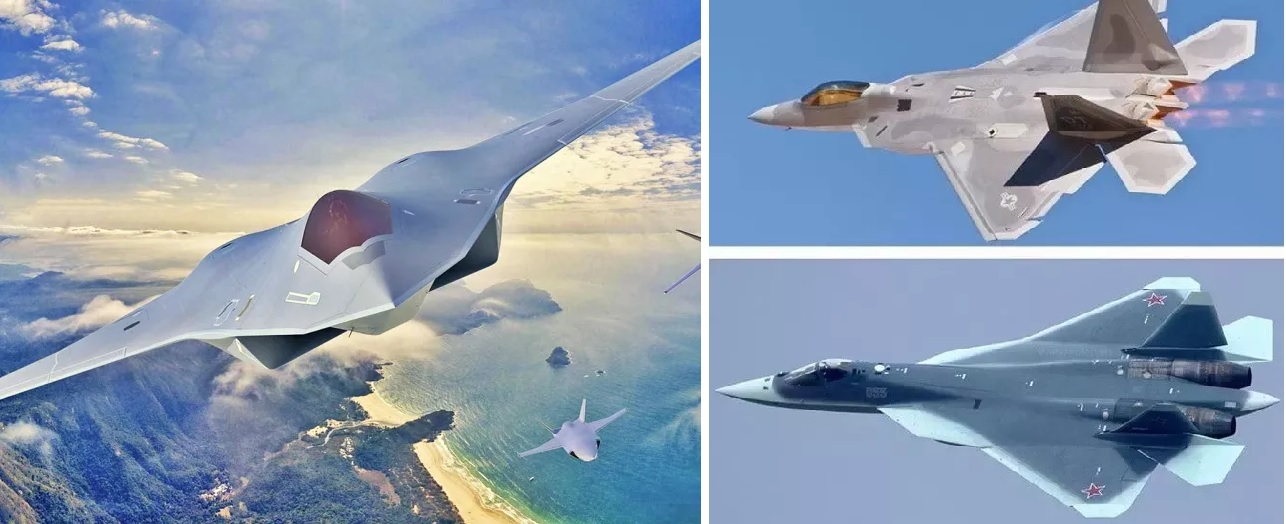 Key Differences Between 5th vs. 6th Generation Fighter Jets
Key Differences Between 5th vs. 6th Generation Fighter Jets
-
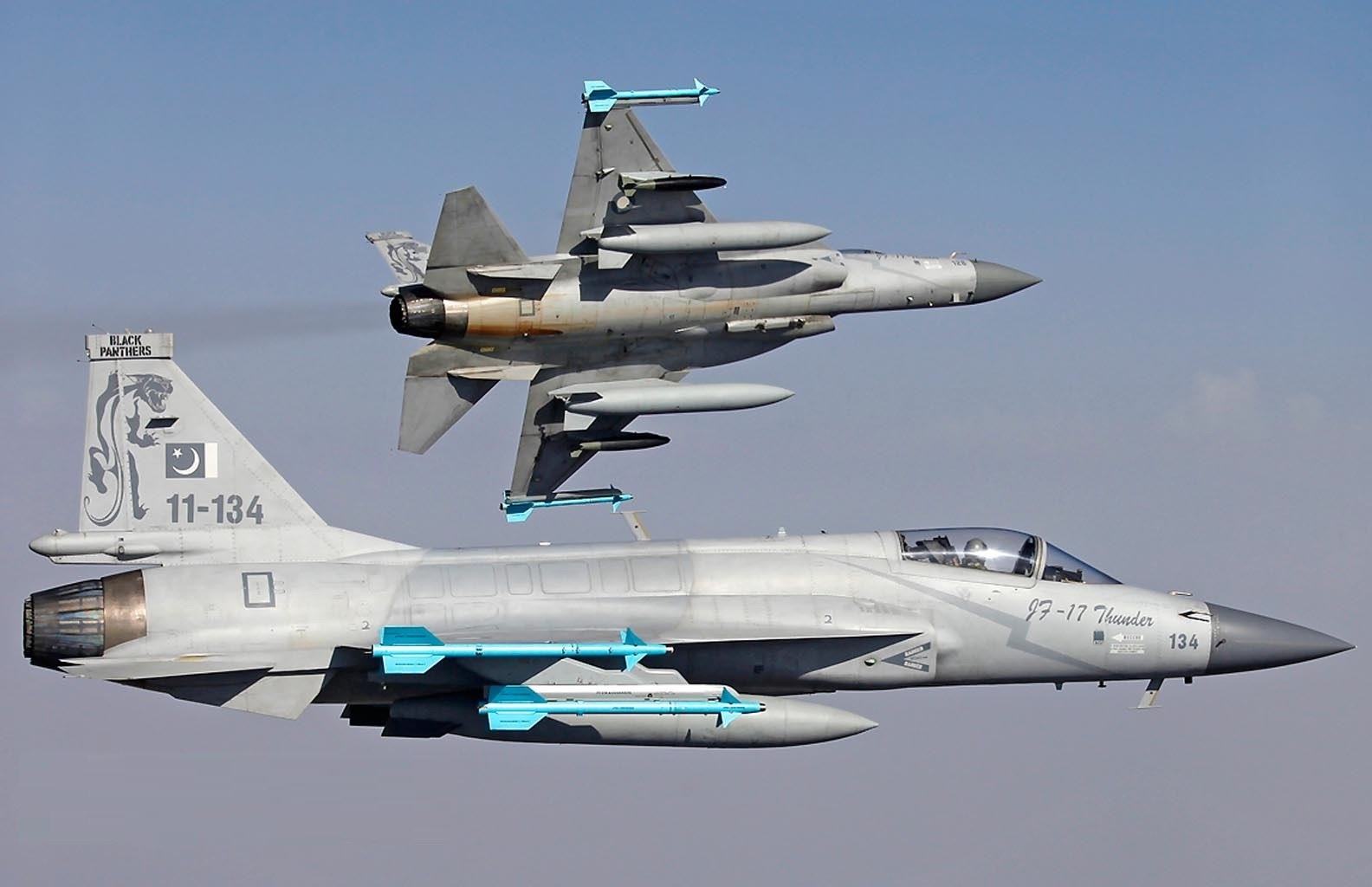 Pakistan Air Force to Unveil Stealth-Enhanced JF-17 Block 4 Fighter Jet by 2028
Pakistan Air Force to Unveil Stealth-Enhanced JF-17 Block 4 Fighter Jet by 2028
-
 Pakistan Announces 15% Increase in Defence Budget for 2024-25 Amid Economic Crisis
Pakistan Announces 15% Increase in Defence Budget for 2024-25 Amid Economic Crisis
-
 India’s AMCA Engine Decision: Safran vs. Rolls-Royce Final Expected by 2025
India’s AMCA Engine Decision: Safran vs. Rolls-Royce Final Expected by 2025
-
 India's TEDBF Program Takes Shape First Flight by 2028: Aiming for Naval Supremacy with Advanced Stealth and Technology
India's TEDBF Program Takes Shape First Flight by 2028: Aiming for Naval Supremacy with Advanced Stealth and Technology
-
 What Would Happen if the USA Left NATO? A Comprehensive Analysis
What Would Happen if the USA Left NATO? A Comprehensive Analysis
Top Trending in 4 Days
-
 China Unveils the World’s First Thorium-Powered Cargo Ship, Carry up to 14,000 Shipping Containers
China Unveils the World’s First Thorium-Powered Cargo Ship, Carry up to 14,000 Shipping Containers
-
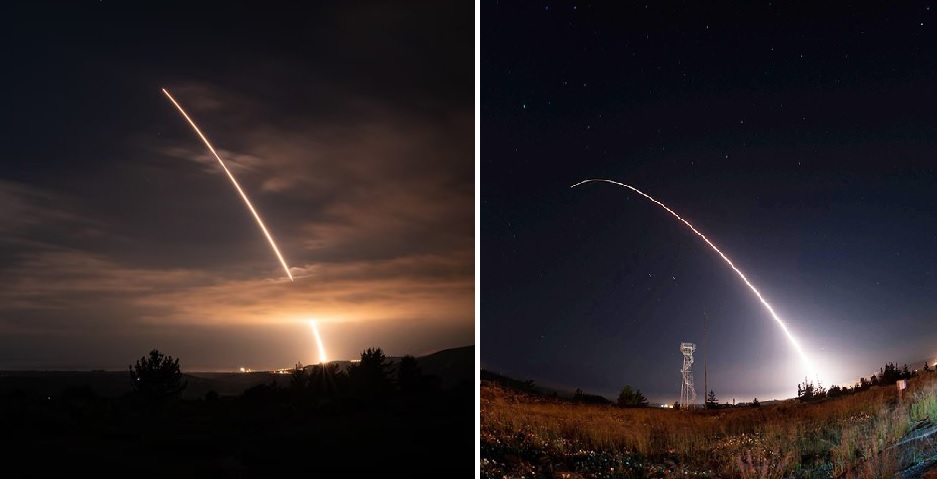 United States Successfully Conducts Unarmed Test Launch of Minuteman III ICBM from California
United States Successfully Conducts Unarmed Test Launch of Minuteman III ICBM from California
-
 Ukraine Opens First Underground Military Training Hub Built with Metinvest’s Steel Dream Technology
Ukraine Opens First Underground Military Training Hub Built with Metinvest’s Steel Dream Technology
-
 NASA Confirms Anomalous Tail on Interstellar Object 3I/Atlas — Defying Known Comet Behavior
NASA Confirms Anomalous Tail on Interstellar Object 3I/Atlas — Defying Known Comet Behavior
-
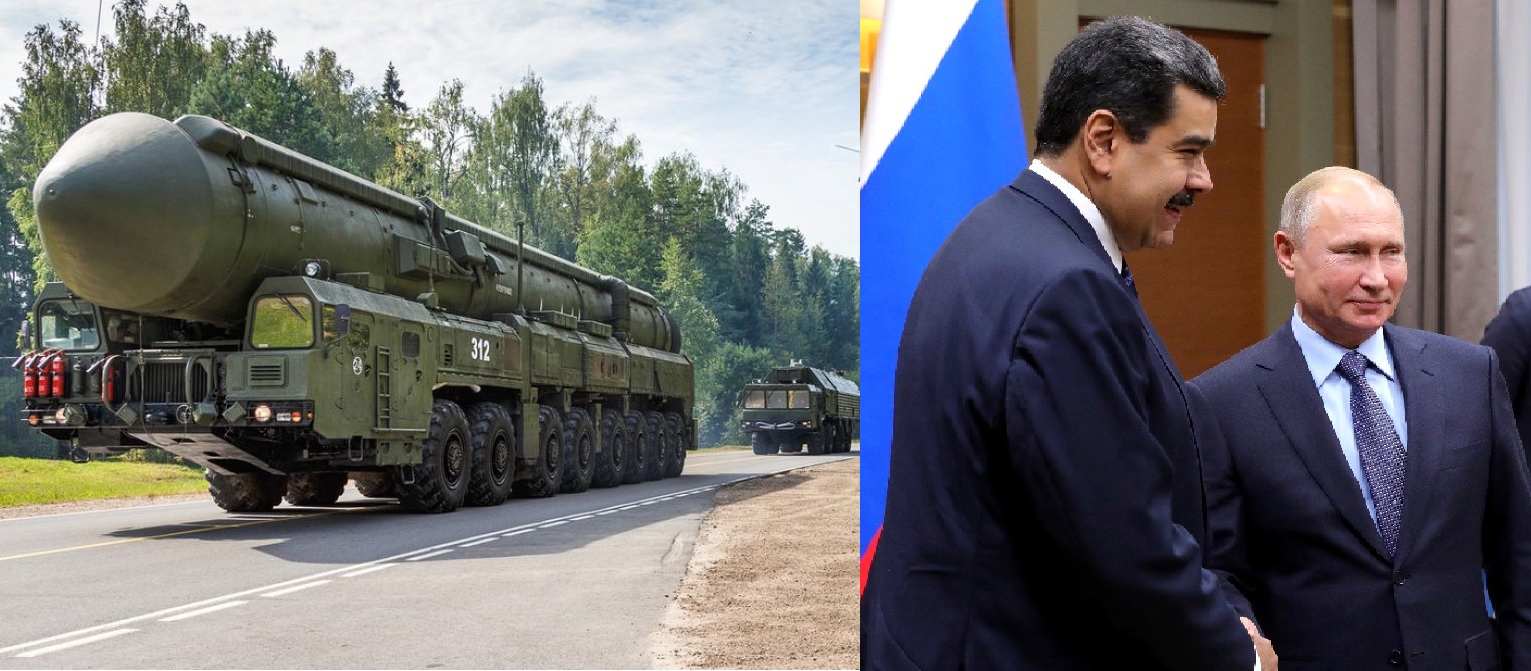 Russia Considers Supplying Venezuela with the “Oreshnik” Missile System — Why It Matters
Russia Considers Supplying Venezuela with the “Oreshnik” Missile System — Why It Matters
-
 Blogger Claims Il-76 Cargo Plane Shot Down in Sudan Was Recently Purchased from Kyrgyzstan for $12 Million
Blogger Claims Il-76 Cargo Plane Shot Down in Sudan Was Recently Purchased from Kyrgyzstan for $12 Million
-
 China Begins Trial Production at the World’s First Flying Car Smart Factory in Guangzhou
China Begins Trial Production at the World’s First Flying Car Smart Factory in Guangzhou
-
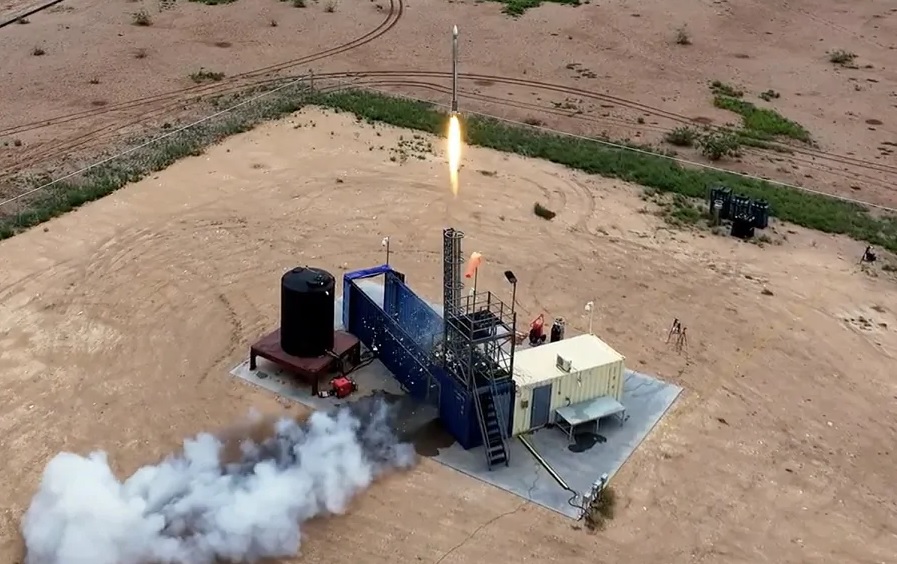 Hanwha Defense USA Invests in Firehawk Aerospace to Accelerate 3D-Printed Rocket Motor Production
Hanwha Defense USA Invests in Firehawk Aerospace to Accelerate 3D-Printed Rocket Motor Production











